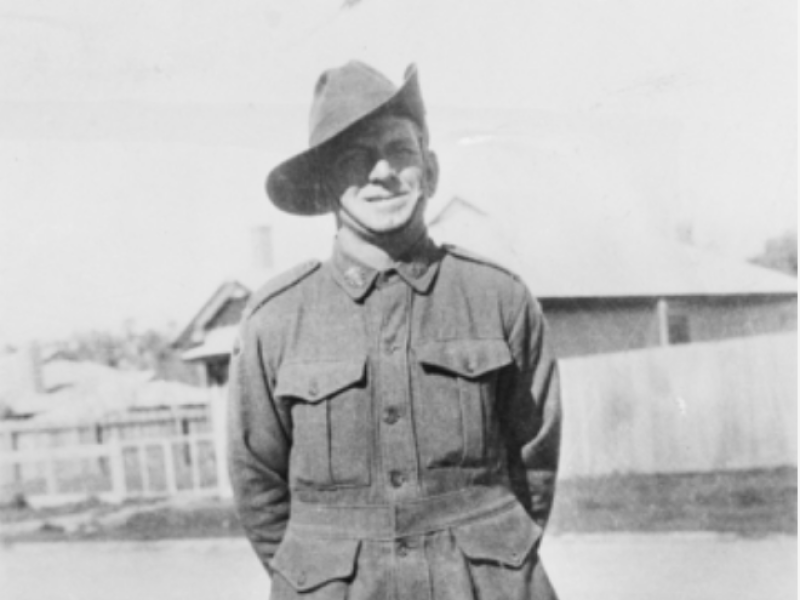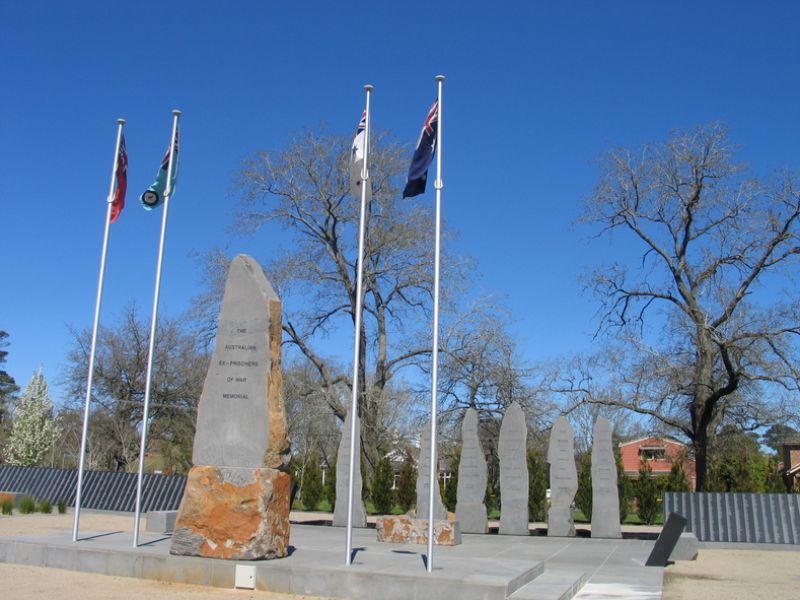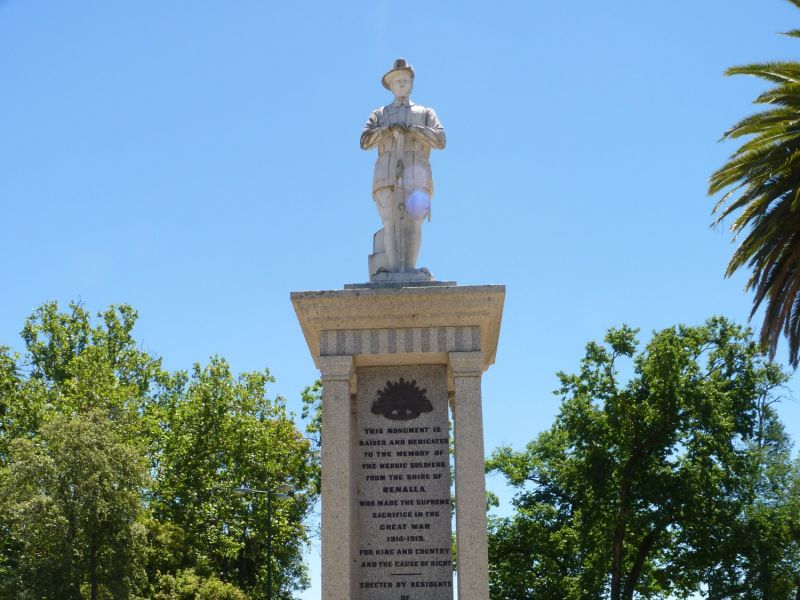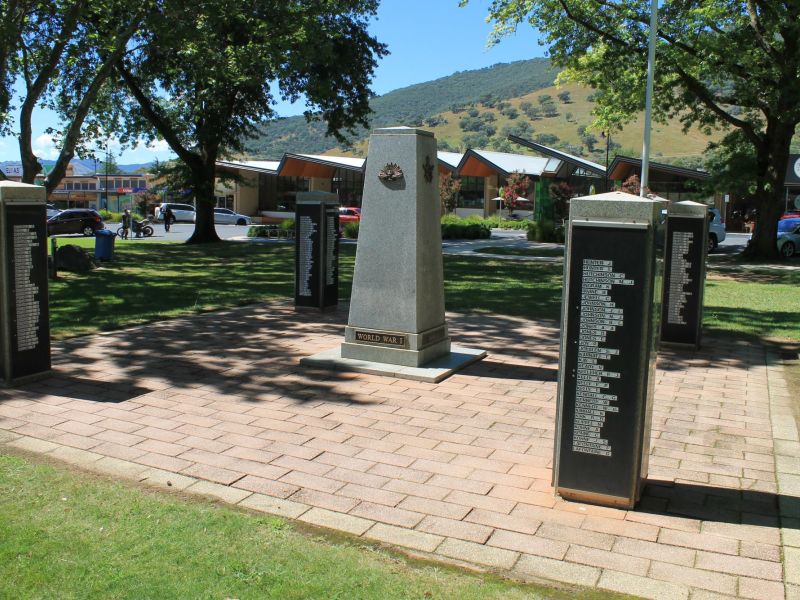Peter Joseph Kelleher
Joe was born on the 22nd of August 1909 at Goulburn, NSW to Peter and Adeline Mabel (née Shurety). He was the eldest son and spent his childhood and teenage years in the Goulburn and Cootamundra regions of NSW. Two of his brothers, Max and Syd, would also enlist during the war.
In 1935, he married Elsie Evelyn Hope Morgan They would have two children during their time together, Beverly in 1936 and Lynette in 1939, both born in Benalla, Victoria. Peter would eventually become a dairy farmer, living along Yabba Rd near Tallangatta.
Joe enlisted in Albury on the 21st of May 1940. He was allocated the Army Number VX19573 and placed on strength with the 2/22nd Battalion.
In July 1940 the 2/22nd Battalion was deployed to Rabaul, New Britain, where they combined with a number of other units to form Lark Force. They were responsible for protecting the vulnerable air bases at Lakunai and Vunakanau in New Britain.
Lark Force was in a dubious position. The Australian Government refused to send material and equipment to Rabaul to assist in its defence. Prior to the Japanese declaring a state of war, the United States had offered extensive materials and equipment for the Australian Forces. December the 7th changed all of that. The Australian Minister for External Affairs, Herbert `Doc’ Evatt, clarified the position by sending a secret cable to President Roosevelt via the Australian ambassador.
“In making the recommendation [to not endanger any further assets] we desire to emphasise the fact that the scale of attack which can be brought against Rabaul from bases in the Japanese mandated islands is beyond the capacity of the small garrison to meet successfully…” Four days after Pearl Harbour, the Australian war cabinet, on behalf of Prime Minister Curtin, sent another secret cable to Washington.
“It would appear under present circumstances that the proposed plan [of American Lend-Lease support] will be greatly delayed or even impossible to fulfil … Under the foregoing circumstance, and as reinforcements and subsequent supply would be hazardous with United States cooperation, it is considered better to maintain Rabaul only as an advanced air operational base, its present small garrison being regarded as hostages to fortune.”
Even before the Japanese had landed, the Australian Government had washed its hands of Lark Force. Effective leadership is essential for any successful venture. Had the 2/22nd had that leadership then perhaps many more men, and women, would have survived the tragedies that were about to overcome the garrison on Rabaul. Colonel John J. “Joe” Scanlan was a decorated veteran of the First World War but his ineffective leadership in the Second World War would result in the death of many of his men, although he, himself, would survive the war, albeit as a POW. Two of his decisions would become infamous during the campaign. On the first day of the new year, 1942, he proclaimed “Every man will fight to the last, THERE SHALL BE NO WITHDRAWAL” His underlining and capitalisation. On the 23rd of January, as Japanese troops stormed the beaches, Japanese aircraft bombed and strafed and Japanese warships entered Rabaul Harbour, Scanlan’s first order would disintegrate. Even though Australian troops fought with tenacity, the Japanese were too powerful. By 1100 hours on that day Scanlan sent the order “every man for himself.” There was no order. There was no structure. Soldiers and civilians were to try and make their way to the coasts of New Britain in the hope that they may find a boat to take them off the island.
To make matters worse, when Australian troops were told to man the emplacements along the beaches they were told that it was only a drill and not to worry about taking their packs with food, water, maps and other necessities. Scanlan was concerned that to inform the men of the impending evasion would cause mass panic. This meant that when the withdrawal began, they had very little supplies with them.
Soldiers began to take off in small groups, with very little knowledge of where to go. It’s known that Joe was a part of a group of at least five including Privates Webster, Donald Searle, McClellan and Milton Naylor. As the party withdrew, the latter two men were captured by the Japanese. As darkness grew on the 23rd, Joe and Webster stumbled into a clearing, coming across a party of men from the 2/22nd. They described to these men how they were exhausted after escaping from a Japanese ambush on the Kokopo Ridge Road. The group had transport, so they all embussed and headed to the Malabunga Mission in the hope of joining up with others.
Already under-equipped, Japanese bombings in January of 1942 destroyed most of Lark Force’s meagre assets. They withdrew from Rabaul and awaited the Japanese landings on the beaches.The superior numbers and equipment soon overwhelmed the defences.
Nothing more is known of Joe’s journey. It is known that he was listed as having died on the 19th of February of wounds received on active service at Rabaul and that he was buried at sea. This implies that he made it to the coast and boarded one of the vessels that had been used to evacuate personnel and take them to New Guinea. It is not known how he received his wounds, although it was probably after the 23rd of January.
The news of Joe’s death reached his family in early April of 1942. At the time, Elsie, Beverly, and Lynette were living at 5 Sharp St, in Benalla, Victoria.
Joe is remembered on the Australian War Memorial Roll of Honour, the Ballarat Australian Ex-Prisoners of War memorial, the Rabaul Memorial, the Benalla War Memorial, the Tallangatta War Memorial and the Cootamundra War Memorial. For his service, he was awarded the 1939-1945 Star, the Pacific Star, the Defence Medal, the War Medal 1939-1945 and the Australian Service Medal 1939-1945.

 Stephen Learmonth
Stephen Learmonth

